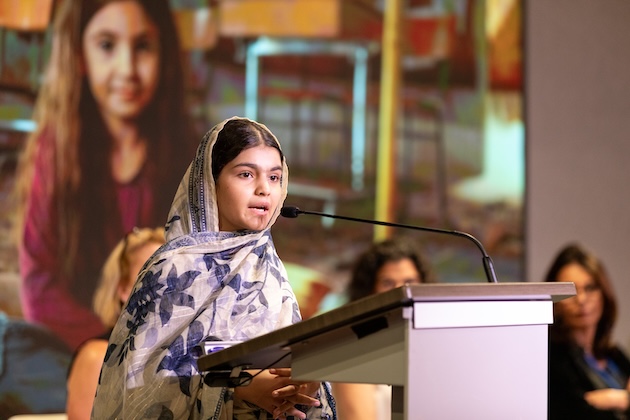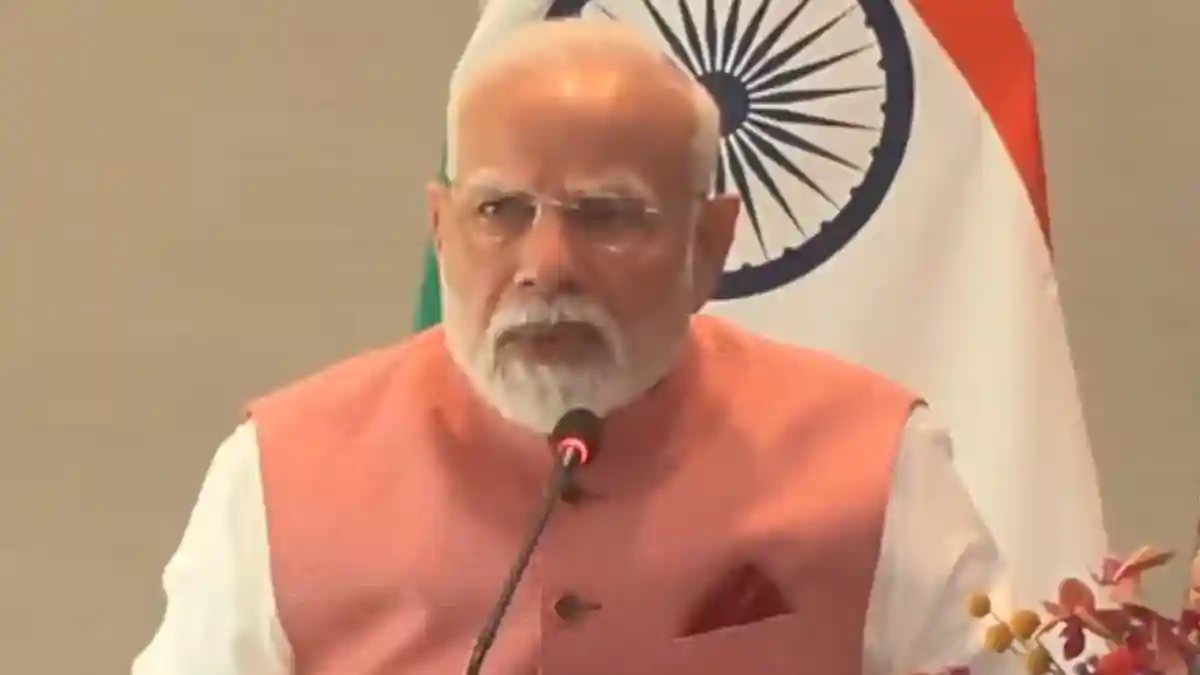By Global Issues,Naureen Hossain
Copyright globalissues

by Naureen Hossain (united nations)Friday, September 26, 2025Inter Press Service
UNITED NATIONS, September 26 (IPS) – The UN General Assembly High-Level Week (22-30 September) has been an opportunity for the world to convene on the most pressing issues of the day, from multilateralism, global financing, gender equality, non-communicable diseases, and AI governance.
Climate change is also a key issue this year as countries present their Nationally Determined Contributions (NDCs) ahead of COP30 in November. At this year’s Climate Summit, held on September 24, over 114 countries spoke at the General Assembly to present their NDCs before the UN Secretary-General and leaders from Brazil, the hosts of COP30.
While these climate action plans are an indication of their commitment to climate change, countries must go further demonstrate their commitment through action.
For some young people, like 15 year-old Zunaira, there is a disconnect between the statements made by leaders and the actions they actually take. Even in climate forums like COP29, “there [were] only policies made… only declarations made, but there [was] no real action.”
“In every country it’s like this, you know; they only speak empty words, and empty promises are made with us as young people and children,” she told IPS.
UNICEF‘s Children’s Climate Risk Index (CCRI) measures the climate risk to children, focusing on both their exposure to climate and environmental hazards and their underlying vulnerability. The index evaluates 56 variables across 163 countries to determine which nations place children at the highest risk from climate impacts. It estimates that about 1 billion children currently reside in these high-risk countries.
Zunaira believes that world governments and leaders need to include children’s voices and perspectives when planning effective climate policies. She observed that perhaps only three percent of the member states that attended COP29 actually included and listened to children’s voices in their policy discussions.
This is not a new demand either, as she remarked that other youth climate advocates have called for increased child engagement in previous conferences, but this was hardly reflected in negotiations.
Zunaira is in New York to participate in UNGA through UNICEF’s Youth Advocates Mobilization Lab, an initiative which recognizes the achievements of UNICEF’s youth advocates, providing child advocates the opportunity to network and share ideas and experiences.
The 15 year-old climate advocate from the Balochistan province of Pakistan shared her research into the impacts of flooding on girls’ education, based on her experiences in 2022.
The 2022 Pakistan floods, which affected over 33 million people and killed 647 children, devastated communities that were not built to adapt to the extreme changes brought on by climate change. The link between extreme weather and climate change is apparent to Zunaira and other young people like her, even if some members in the community don’t recognize it right away and write it off as just a natural phenomenon.
Through a policy research programme hosted by UNICEF Pakistan, Zunaira investigated the impact of the floods on girls’ education when she was only 12 years old. She visited Sakran, one of the flood-prone areas in the state, where she interviewed people at a nearby village in the Hub district of Balochistan. Here she spoke to 15 secondary school-aged girls. She described how the devastation of the floods literally washed away the huts that used to be their schools.
According to UNICEF, her findings “highlighted that floods had exacerbated educational inequalities” and “[forced] girls into temporary shelters and disrupting their education.”
“The study also highlighted some promising interventions and called for better disaster preparedness in schools and flood-resistant infrastructure to safeguard girls’ education. The research underscored the urgent need for integrated strategies that combine climate resilience with gender equity.”
Zunaira remarked that with the devastation brought on by the floods, for many children there was no school to return to. She and many other students lost out on schooling because of the disruptions. In some cases, the next closest school would be up to 25 miles away from where some students lived, so there is seemingly little justification for sending them back to school.
There is also the need to invest in building up climate-resilient infrastructure that can withstand extreme weather conditions like flooding. Local communities need both the investments and resources to fulfill this, otherwise there may be little reason to build up a new school again only to see it get washed away again.The need for climate adaptation is something the international community must support, as seen with the Fund for for Responding to Loss and Damage (FRLD).
Zunaira’s message to world leaders is that they must encourage and include children and youth in climate discussions. They also should not reduce the lived experiences to statistics and should be conscientious of the lives forever changed or lost because of a climate disaster.
“You should think of this… it is not just a statistic. It’s something that life has lost, and thousands of homes and thousands of people, you know, have been displaced and lost their lives. So this is something that the world leaders must know: that they are not only statistics; they are real lives.”
IPS UN Bureau Report
© Inter Press Service (20250926125536) — All Rights Reserved. Original source: Inter Press Service



